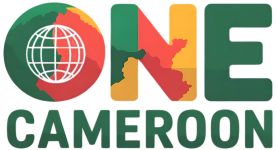As Cameroon pursues economic growth and electrification goals, renewable energy and sustainable practices have emerged as critical components of development strategies. Although the national grid reaches only about 70% of urban populations and a mere 20% of rural communities, a mix of solar, small-scale hydro, and biomass projects is expanding access to power while reducing environmental impacts. Simultaneously, governmental policies, private investments, and grassroots initiatives drive eco-conscious innovations—from off-grid solar kits to waste-to-energy pilot plants.
Solar power leads the renewable charge. With average solar irradiance exceeding 5 kWh/m²/day in many regions, Cameroon offers ideal conditions for photovoltaic (PV) installations. The national Rural Electrification Agency (AGER) and private developers such as Solar Electric Light Fund (SELF) have installed mini-grids in remote villages like Matakam (North Region) and Binguela (East Region). These systems, typically 10–50 kW, power street lighting, community centers, and water pumps. Residents pay nominal tariffs per kilowatt-hour—often collected via mobile money platforms—ensuring maintenance costs are covered.
Urban solar adoption is rising as well. In Douala and Yaoundé, commercial buildings, schools, and health clinics install rooftop solar arrays to offset erratic grid supply. Companies like Voltech Group (based in Paris but operating regionally) design and install off-grid solar solutions: battery storage systems that power clinics overnight, cold-chain refrigeration for vaccines, and LED streetlights. Pay-as-you-go (PAYG) solar providers—such as Off-Grid Electric (now Zola Electric)—offer rural households solar home systems (10–200 W) financed through low-interest microloans. Customers use mobile payments to unlock additional features—lighting, phone charging, and radio reception—improving education and communication in remote areas.
Small hydropower projects harness Cameroon’s rivers and streams. The Songloulou Hydroelectric Plant (384 MW) and Edea Power Station (264 MW) contribute significantly to national generation capacity. On a smaller scale, run-of-river projects—such as the Bini and Mbakaou mini-hydros (5–10 MW each)—generate clean energy for local grids. Feasibility studies by the Electricity Development Corporation (EDC) identify rapids and waterfalls in the Western and Northwest regions suitable for micro-hydro installations. Community-managed mini-hydro units in villages near Bamboutos and Mount Oku supply electricity to households within a 10 km radius—catalyzing local economic activities like milling and refrigeration.
Biomass and biofuel initiatives tap into agricultural residues and forestry byproducts. Agro-industries such as Cameroon Development Corporation (CDC) produce palm kernel shells and empty fruit bunches (EFB) from palm oil processing. These residues fuel cogeneration plants that produce steam for on-site operations and generate electricity—improving energy efficiency. Research by the Institute of Agricultural Research for Development (IRAD) explores briquetting of rice husks and cocoa pod husks, creating affordable cooking fuel for urban households—reducing reliance on charcoal and mitigating deforestation.
In urban centers, solid waste management transitions from open dumpsites to refuse-to-energy experiments. The Douala Waste-to-Energy project—led by the City of Douala and Chinese partners—pilots anaerobic digestion of organic waste from markets and restaurants. Biogas produced powers vehicles and generators; digestate is processed into organic fertilizer for peri-urban farms. Meanwhile, recycling cooperatives collect plastic bottles and metal scrap, selling sorted materials to regional processing plants. Public awareness campaigns—led by NGOs like Zero Waste Cameroon—organize annual clean-up drives on World Environment Day, highlighting the value of waste segregation at source.
Green building practices gain traction among developers and homeowners. The national Green Building Charter (launched in 2022) establishes voluntary guidelines for energy-efficient design—encouraging passive cooling, natural ventilation, rainwater harvesting, and locally sourced materials. Landmark projects such as the Cardinal Paul Emile Leger Memorial Hospital (Yaoundé) incorporate solar water heaters, reflective roofing, and landscaped courtyards reducing heat islands. Private residential compounds in Bonapriso (Douala) feature rainwater collection systems providing irrigation for gardens and toilet flushing—lowering potable water consumption.
Sustainable agriculture integrates climate-smart practices. In the Northern regions, Sahelian farmers adopt agroforestry: intercropping millet with nitrogen-fixing acacia trees to improve yields and soil fertility. Drip-irrigation pilot projects in Mayo-Danay use solar-powered pumps to reduce water wastage and expand dry-season farming. On the western plateau, farmers participate in producer groups learning conservation agriculture—reduced tillage, cover cropping, and crop rotation—boosting yields while preserving topsoil. Programs led by FAO and IFAD provide training, drought-resistant seeds, and microloans for equipment purchases.
Electric mobility (e-mobility) is nascent but emerging. In Yaoundé, Ride-and-Go e-bike-sharing services pilot green transport in central districts—charging stations powered by rooftop solar arrays. Electric motorcycle taxis (“boda-bodas”) operate in Douala, offering affordable, emission-free rides. Import duties on electric vehicles have been reduced to encourage adoption. The Ministry of Transport (MINTRANS) collaborates with Chinese firms to test electric buses on high-traffic routes—one bus carrying up to 50 passengers—reducing greenhouse gas emissions and air pollution.
Community-driven conservation efforts protect Cameroon’s rainforests and wetlands. NGOs such as A Rocha Cameroon and the Cameroon Wildlife Conservation Society partner with local villages to establish community forests. Revenue-sharing agreements from carbon credits (under REDD+ initiatives) provide villagers with alternative livelihoods—non-timber forest products (NTFPs) like bush mango (Irvingia gabonensis) fruits and medicinal plants. Ecotourism lodges surrounding these forests—like those near Dja Faunal Reserve—reinvest 70% of profits into local conservation and education programs.
Educational institutions integrate sustainability into curricula. The University of Dschang offers a Master’s program in Renewable Energy Engineering. Technical high schools in Maroua teach solar panel installation and maintenance. Student-led clubs in secondary schools organize tree-planting campaigns: over 10,000 seedlings planted across the Western Highlands in 2024. Hackathons on green innovation, hosted at Impact Hub Douala, challenge youths to develop low-cost sensors for monitoring air quality and water purity—fostering a new generation of environmental stewards.
Cameroon’s government has set targets under its Nationally Determined Contributions (NDCs) to achieve 38% renewable energy share in total electricity consumption by 2030. Progress depends on scaling up public–private partnerships, streamlining regulatory frameworks, and ensuring technical capacity for installation and maintenance. While challenges remain—grid instability, financing constraints, and skills gaps—the momentum behind green innovations in Cameroon signals a transition toward sustainable, resilient development—where energy access goes hand in hand with environmental stewardship.









